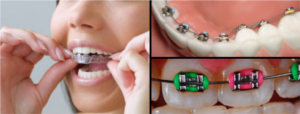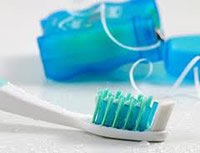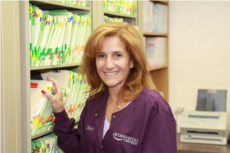Home Care
Eating Habits

| Absolutely No: Gum: Sugarless or otherwise Sticky Foods: Caramels Sugar Daddies Starbursts Caramel Apples Sugar Babies Licorice Toffee Tootsie Rolls Now & Laters |
Eat with Caution or Cut up: Hard Foods Nuts Popcorn Bagels Apples Corn on the Cob Pizza Crusts Carrots (uncooked) Doritos Pretzels |
Eat much less: Candy Ice Cream Cake, Cookies Pie Foods with Sugar Drink much less: Pop/Soda Drinks with Sugar |
Braces
Check braces once a week for anything loose or bent. If a bracket or band comes loose or you break a wire, please call our office so that we can arrange an appointment long enough to repair it. Try to explain what has happened by using the diagram provided. Be as specific as possible with the receptionist. If you lose your rubber bands, call us so we can mail you some more or drop by the office and pick some up.
Sore Teeth

215-676-7846 (Philadelphia) or 215-675-0542 (Hatboro)
Elastics
Attached to your braces, elastics (rubber bands) exert the proper force that creates the right amount of pressure to move teeth. In order for this force to remain constant, elastics must be worn all the time and changed every day. Any time missed in wearing your elastics will only make your treatment take longer, so remember these things:
- You are responsible for placing the elastics on your braces between appointments. Make sure to wear them as instructed. Remove them only when brushing your teeth, gums and braces after meals. Then put them back on immediately.
- Always carry a few elastics with you, so if one breaks you can replace it right away. If your supply is low, call the office and we will mail you an additional supply of elastics.
- If you forget to insert your elastics one day, don’t double up the next day- just follow your regular instructions.
- Elastics become worn out. When they lose their elasticity, they don’t provide the proper pressure on your teeth and jaws. It is very important to change them as directed, even when they are not broken.
If your elastics break frequently, a wire or band loosens, or a hook breaks off – call our office immediately. Don’t wait until your next appointment. These problems need to be corrected as soon as possible!

- The removable appliance is carefully designed to move or to hold your teeth. It is important that it is worn according to instructions and brought to each appointment.
- Wear your appliance at all times, even while you are asleep. It may be removed while eating, swimming, or playing vigorous sports activities. In two or three days your speech will return to normal with the appliance in place. Avoid flipping your appliance with your tongue. This can cause damage to your teeth or breakage of your appliance.
- Your new appliance may make your teeth sore for a day or two, especially after an adjustment. If you have a sore spot on your gums call our office so that we can adjust the appliance.
- Clean your appliance by brushing it daily with toothpaste. Denture cleaner can also be used for a more thorough cleaning. If you are wearing a bonded wir retainer behind your front teeth, be extra careful to clean the wire and the area around it. Flossing should be done every day.
- Never wrap your appliance in a paper napkin or tissue and set it down on the table. You or someone else may throw it away. Don’t put it in your pocket when playing or you may break or lose it. Whenever it is not in your mouth it should be in its plastic appliance case.
- Keep your appliance away from dogs or cats as they love to chew on them. Avoid storing them near any source of heat. Do not boil your retainer to sterilize it! If needed, bring it to the office and we will be happy to disinfect it for you.
- An additional charge will be incurred for lost or broken appliances.
Brushing and Flossing
Daily oral hygiene is critical to maintaining healthy teeth and gums during orthodontic treatment. You will notice that it requires more effort to keep your teeth clean with orthodontic appliances in place. Food may become trapped around your brackets and between your teeth and can only be removed by brushing and flossing. Plaque remaining on the teeth due to poor hygiene may cause swelling of the gums, cavities, and white scars on the tooth surface.
Brushing after meals should become part of your daily oral hygiene. Use a soft toothbrush with firm pressure and brush at a 45-degree angle to the tooth; brush in small circles above and below the brackets. Your toothbrush will wear out more rapidly because of your appliances, so be sure to replace it when the bristles start to fray. A mechanical or ultrasonic toothbrush are popular options with many of our patients and can be used effectively without damaging your orthodontic appliances. Flossing is critical for cleaning between the teeth and should be done every day. Many flossing aids have been designed for assistance while flossing with braces. We will review hygiene with you at your regular visits and provide you with tips on taking care of your teeth while in orthodontic treatment. Finally, every patient with cemented appliances should be using a daily prescription strength fluoride rinse. For your convenience we have this rinse available for purchase in our office in a variety of flavors.
Oral Hygiene with Orthodontic Appliances

To provide you with a better understanding of oral hygiene with braces, we have provided the following multimedia presentation.
Having trouble? Please make sure you have version 7 of the Flash browser plugin in order to correctly view this presentation. This software is available as a free download.
- Brush after every meal.
- Use a toothbrush with a small amount of toothpaste.
- Use circular, vibrating motions around the gumline for about 10 seconds on each tooth.
- Brush every tooth slowly.
- Brush the lower teeth up and the upper teeth down.
- Also brush your tongue and the roof of your mouth.
- Floss nightly after brushing to remove the plaque missed by brushing.
- Carefully pull waxed floss between wire and braces.
- Floss carefully around the braces.
- Floss carefully around the gum area.
- Floss around each tooth.
First Aid
If a wire causes irritation, push the wire away from the area using the eraser end of a pencil or a Q-tip. If the wire cannot be tucked away, cover the end of the wire with a small piece of wax, a cotton ball, or a piece of sugarless gum, until you can come into the office for an adjustment.
- If the main wire has come out of the tube or pipe on your back molar tooth, attempt to reinsert the wire with a pair of needle nosed pliers or tweezers. If the wire is not sticking you, place a piece of wax over the area. If the wire is sticking you and wax does not help, the wire can be cut with a small wire cutter or toenail clipper close to the back of the last brace. This is a last resort if professional help is unavailable.
- In case a rubber spacer falls out, take two pieces of dental floss and insert them through the spacer. Pull on both pieces of floss to stretch the spacer, then slide the spacer back and forth between the two teeth where it belongs. Once the bottom half of the spacer slips under the tight spot between the teeth, release and remove the floss and the spacer will fit back properly.
- If a bracket becomes loose, it usually remains connected to the main wire by a little rubber colored ring. Eyebrow tweezers can be used to reposition the brace if it flips around the wire and becomes a source of irritation. Call our office and inform us of your situation.
- If a piece of your braces breaks, save the piece and call our office to schedule a repair visit.
- Remain calm if you swallow a piece of your appliance. This will usually go either into the stomach and pass out of the body in a bowel movement. However, if difficulty breathing is experienced, you should seek immediate medical attention. X-rays will be taken to determine the location of the swallowed piece.
- If a retainer cracks, remove the retainer from your mouth and bring all the pieces to our office for professional repair.
- Take Aspirin, Tylenol or Ibuprofen (unless allergic) if your teeth are sore after a monthly visit.
- Rinsing your mouth with a cup of warm water and teaspoon of salt can also be soothing. If your teeth get sore suddenly in the middle of the month, give us a call because it is unusual for the teeth to get sore several weeks after your last office visit.
- If food becomes stuck between your teeth, use dental floss or a proxy brush to dislodge the food.
- If you cut your gums, tongue or the inside of your cheek, apply finger pressure to the bleeding site for several minutes. If the bleeding won’t clot, call your orthodontist or primary care-family dentist.

 If a wire causes irritation, push the wire away from the area using the eraser end of a pencil or a Q-tip. If the wire cannot be tucked away, cover the end of the wire with a small piece of wax, a cotton ball, or a piece of sugarless gum, until you can come into the office for an adjustment.
If a wire causes irritation, push the wire away from the area using the eraser end of a pencil or a Q-tip. If the wire cannot be tucked away, cover the end of the wire with a small piece of wax, a cotton ball, or a piece of sugarless gum, until you can come into the office for an adjustment.